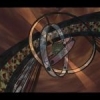Quote:
Benoît B. Mandelbrot, a maverick mathematician who developed the field of fractal geometry and applied it to physics, biology, finance and many other fields, died on Thursday in Cambridge, Mass. He was 85.
...
Dr. Mandelbrot coined the term “fractal” to refer to a new class of mathematical shapes whose uneven contours could mimic the irregularities found in nature.
“Applied mathematics had been concentrating for a century on phenomena which were smooth, but many things were not like that: the more you blew them up with a microscope the more complexity you found,” said David Mumford, a professor of mathematics at Brown University. “He was one of the primary people who realized these were legitimate objects of study.”
In a seminal book, “The Fractal Geometry of Nature,” published in 1982, Dr. Mandelbrot defended mathematical objects that he said others had dismissed as “monstrous” and “pathological.” Using fractal geometry, he argued, the complex outlines of clouds and coastlines, once considered unmeasurable, could now “be approached in rigorous and vigorous quantitative fashion.”
...
In the 1950s, Dr. Mandelbrot proposed a simple but radical way to quantify the crookedness of such an object by assigning it a “fractal dimension,” an insight that has proved useful well beyond the field of cartography.
Over nearly seven decades, working with dozens of scientists, Dr. Mandelbrot contributed to the fields of geology, medicine, cosmology and engineering. He used the geometry of fractals to explain how galaxies cluster, how wheat prices change over time and how mammalian brains fold as they grow, among other phenomena.
His influence has also been felt within the field of geometry, where he was one of the first to use computer graphics to study mathematical objects like the Mandelbrot set, which was named in his honor.
...
“He doesn’t spend months or years proving what he has observed,” said Heinz-Otto Peitgen, a professor of mathematics and biomedical sciences at the University of Bremen. And for that, he said, Dr. Mandelbrot “has received quite a bit of criticism.”
“But if we talk about impact inside mathematics, and applications in the sciences,” Professor Peitgen said, “he is one of the most important figures of the last 50 years.”
...
If you've got renderings of Mandelbrot sets to share, this would be a good time to do so.
[Edited by - LessBread on October 17, 2010 6:22:47 PM]











